Name Earle Brown | Role Composer | |
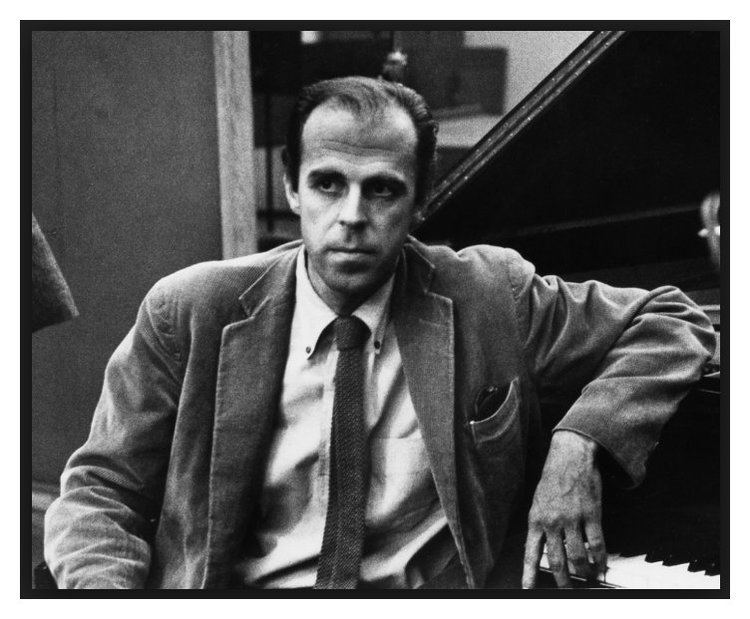 | ||
Died July 2, 2002, Rye, New York, United States Albums Selected Works (1926-2002), Folio And Four Systems Awards Guggenheim Fellowship for Creative Arts, US & Canada Similar People | ||
Earle brown times five earle brown symposium
Earle Brown (December 26, 1926 – July 2, 2002) was an American composer who established his own formal and notational systems. Brown was the creator of open form, a style of musical construction that has influenced many composers since—notably the downtown New York scene of the 1980s (see John Zorn) and generations of younger composers.
Contents
- Earle brown times five earle brown symposium
- Earle brown corroboree earle brown symposium
- Life
- Open form
- Notation
- December 1952 and FOLIO
- Other activities
- Works
- Selected discography
- Wergo re releases on CD
- References
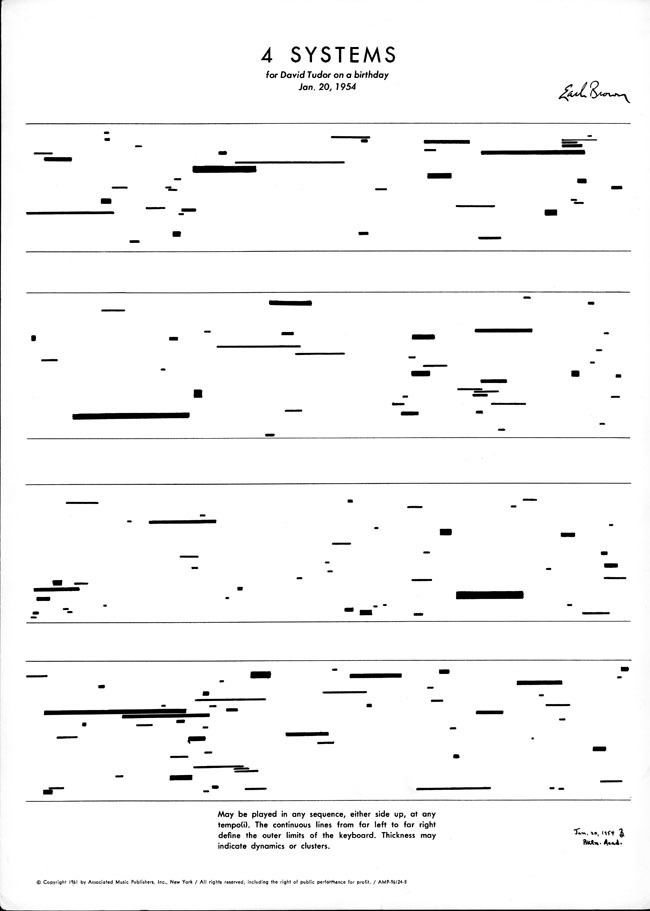
Among his most famous works are December 1952, an entirely graphic score, and the open form pieces Available Forms I & II, Centering, and Cross Sections and Color Fields.
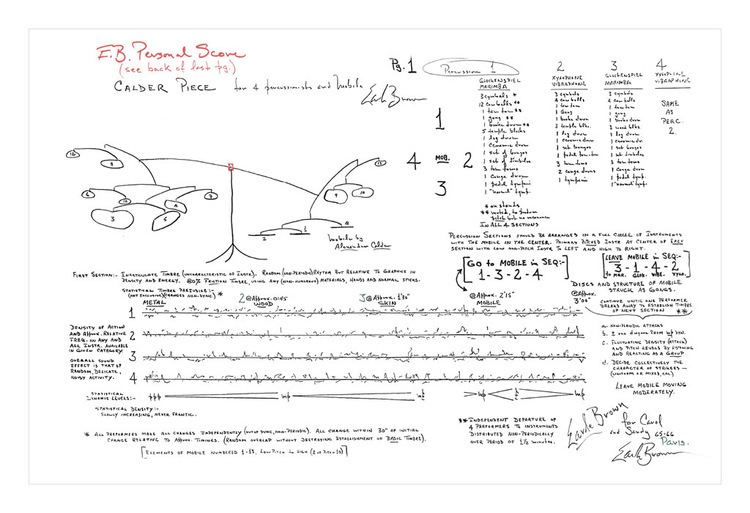
Earle brown corroboree earle brown symposium
Life
Brown was born in Lunenburg, Massachusetts, and first devoted himself to playing jazz. He initially considered a career in engineering, and enrolled for engineering and mathematics at Northeastern University (1944–45). He enlisted in the U.S. Air Force in 1945. However, the war ended while he was still in basic training, and he was assigned to the base band at Randolph Field, Texas, in which he played trumpet. The band included saxophonist Zoot Sims. Between 1946 and 1950 he was a student at Schillinger House in Boston, which is now the Berklee College of Music. Brown had private instruction in trumpet and composition. Upon graduating he moved to Denver to teach Schillinger techniques. John Cage invited Brown to leave Denver and join him for the Project for Music for Magnetic Tape in New York. Brown was an editor and recording engineer for Capitol Records (1955–60) and producer for Time-Mainstream Records (1960–73).
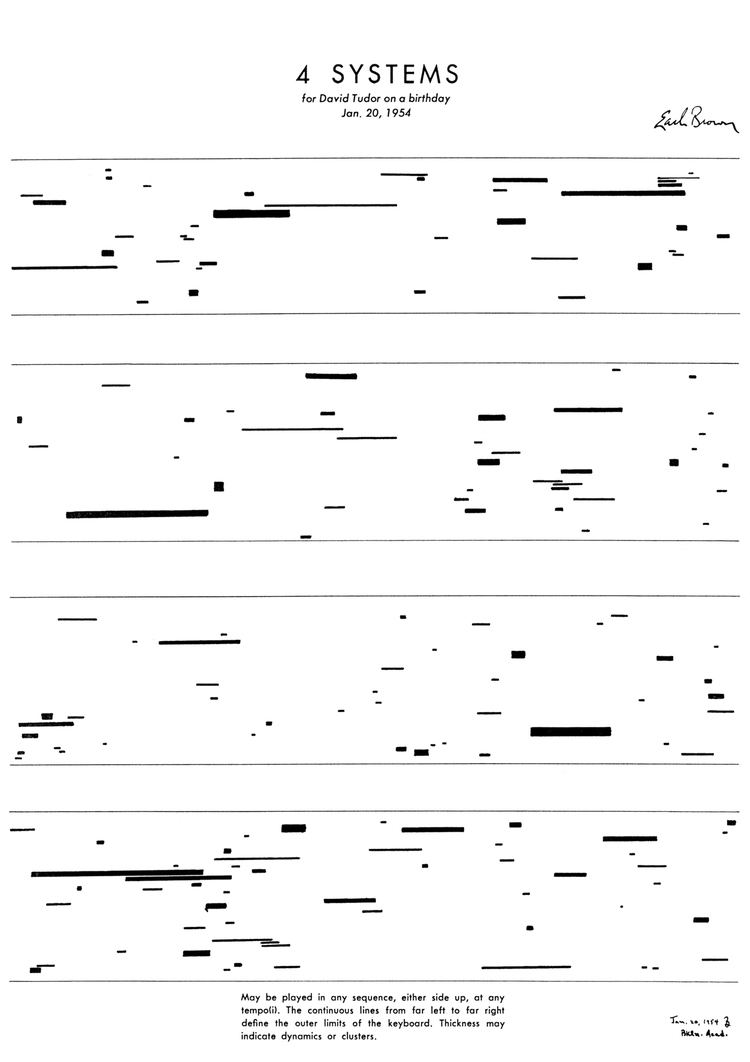
Brown's contact with Cage exposed David Tudor to some of Brown's early piano works, and this connection led to Brown's work being performed in Darmstadt and Donaueschingen. Composers such as Pierre Boulez and Bruno Maderna promoted his music, which subsequently became more widely performed and published.
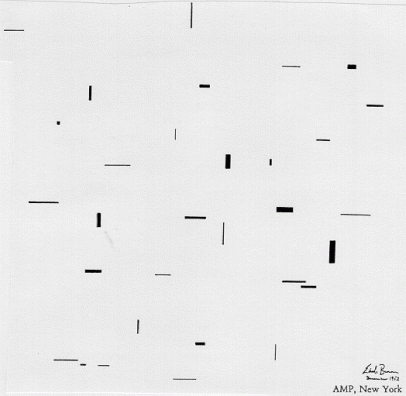
Brown is considered to be a member of the New York School of composers, along with John Cage, Morton Feldman, and Christian Wolff. Brown cited the visual artists Alexander Calder and Jackson Pollock as two of the primary influences on his work. He was also inspired by author, Gertrude Stein, and by many artists he was personally acquainted with such as Max Ernst and Robert Rauschenberg.
Brown died in 2002 of cancer, in Rye, New York.
Open form
A great deal of Brown's work is composed in fixed modules (though often with idiosyncratic mixtures of notation), but the order is left free to be chosen by the conductor during performance. The material is divided in numbered "events" on a series of "pages". The conductor uses a placard to indicate the page, and with his left hand indicates which event is to be performed while his right hand cues a downbeat to begin. The speed and intensity of the downbeat suggests the tempo and dynamics.
Brown's first open-form piece, Twenty-Five Pages, was 25 unbound pages, and called for anywhere between one and 25 pianists. The score allowed the performer(s) to arrange the pages in whatever order they saw fit. Also, the pages were notated symmetrically and without clefs so that the top and bottom orientation was reversible.
Through this procedure, no two performances of an open form Brown score are the same, yet each piece retains a singular identity and his works exhibit great variety from work to work. Brown relates his work in open form to a combination of Alexander Calder's mobile sculptures and the spontaneous decision making used in the creation of Jackson Pollock's action paintings.
Notation
Although Brown precisely notated compositions throughout his career using traditional notation, he also was an inventor and early practitioner of various innovative notations.
In Twenty-Five Pages, and in other works, Brown used what he called "time notation" or "proportional notation" where rhythms were indicated by their horizontal length and placement in relation to each other and were to be interpreted flexibly. However, by Modules I and II (1966), Brown more often used stemless note heads which could be interpreted with even greater flexibility.
In 1959, with Hodograph I, Brown sketched the contour and character abstractly in what he called "implicit areas" of the piece. This graphic style was more gestural and calligraphic than the geometric abstraction of December 1952. Beginning with Available Forms I, Brown used this graphic notation on the staff in some sections of the score.
December 1952 and FOLIO
December 1952 is perhaps Brown's most famous score. It is part of a larger set of unusually notated music called FOLIO. Although this collection is misconstrued as coming out of nowhere historically, music notation has existed in many forms—both as a mechanism for creation and analysis. Brown studied what is now called Early Music, which had its own systems of notation, and was a student of the Schillinger System, which almost exclusively used graph methods for describing music. From this perspective FOLIO was an inspired, yet logical connection to be made—especially for a Northeasterner who grew up playing and improvising jazz.
December 1952 consists purely of horizontal and vertical lines varying in width, spread out over the page; it is a landmark piece in the history of graphic notation of music. The role of the performer is to interpret the score visually and translate the graphical information to music. In Brown's notes on the work he even suggests that one consider this 2D space as 3D and imagine moving through it. The other pieces in the collection are not as abstract. According to dates on the scores, Brown wrote December 1952 and then moved back towards forms of notation that contain more specific musical information.
Other activities
Works
Selected discography
Wergo re-releases on CD
Contemporary Sound Series, recorded from 1960–1973:
